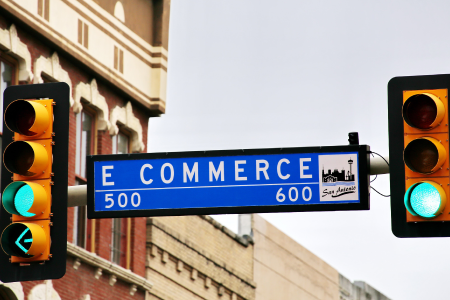January 26th, 2021
On June 23rd, 2016, the United Kingdom (England, Scotland, Wales, and Northern Ireland) voted to leave the European Union (EU). This became a reality on January 31st, 2020 with an initial agreement authorized by Prime Minister Boris Johnson.
Nothing changed too much in 2020. During this period, negotiations took place between the United Kingdom (UK) and the EU regarding their future relationship, including matters of trade, migration, and legislation. After long, intensive negotiations, they finally reached an agreement on December 24th, 2020.
Now, as of January 1st, 2021, the EU’s relationship with the UK is different than it has been in the past. Aside from the impact Brexit has had on EU citizens who wish to live and work in the UK and vice versa, it will also have a significant impact on exports to the UK, and therefore also on e-commerce.
The TSP
HM Revenue and Customs (HMRC) introduced the TSP in early 2019 to support businesses with the new customs requirements in the event that the UK would leave the EU without a deal. The meaning of TSP is Transitional Simplified Procedures, or simplified transition procedure.
This procedure was suspended on January 30th, 2020. If you have already signed up for this scheme, it is advised to keep the paperwork safe. Due to the arrival of the deal, the TSP no longer applies, because there is a deal and new rules apply.
E-Commerce in the UK
The UK achieved the highest online turnover in Europe in 2019, with a staggering €200 billion in e-commerce sales during that year. So if you have an e-commerce business, or would like to start one, the UK can be a hugely interesting market. But to enter the market, you have to make sure that you are aware of the latest changes that have been put into place due to Brexit. Now that the UK is no longer part of the EU, this has (administrative) consequences for your exports.
The UKCA Marking
Many consumer products that appear on the market within the EU must have a CE marking. This marking shows that the product meets all necessary requirements and can be legally sold in the EU. Following Brexit, the CE marking is no longer sufficient for goods sold in Great Britain (England, Wales, and Scotland).
Instead, Great Britain has introduced the UKCA marking. This marking replaces the CE marking that is still used in the EU—and previously used in Great Britain—and it must be present on all goods sold in the region. In sum, if a product is for the market in Great Britain, it must have the UKCA marking regardless of where it came from. On the other hand, if the product origin is Great Britain and it is for the EU market, the UKCA marking is not accepted. The product must have a CE marking.
For goods placed on the market in Northern Ireland, the UKCA marking alone is not enough; additional rules apply.
Customs
When selling and shipping goods to consumers in the UK from the EU, export declarations must be made in the EU country of origin, and import declarations must be made in the UK. In addition to these documents, an Economic Operators Registration and Identification, or EORI number, is required for export. Furthermore, you can expect that the settlement at customs will take more time and that costs will be higher. For example, import VAT and handling fees.
However, there is a way to reduce the amount of time this all takes. You can apply for an Authorised Economic Operator (AEO) status, which gives your shipments priority and limits physical checks. It is especially wise to take advantage of this if you currently export, or plan to export, to the UK often.
In order to avoid problems with customs, which can cause significant delays, we recommend that you outsource shipping operations to a freight forwarder if you have little to no experience with this process. These types of businesses will take care of the entire customs procedure, giving you the assurance that all of your documents are in order and your customers will receive their orders as planned.
Export VAT
Following Brexit, deliveries to the UK are now subject to VAT regulations for exports to non-EU countries. That means that those exporting goods to the UK from the EU should apply the 0% VAT rate. But don’t make the common mistake of forgetting to report the turnover made in your periodic VAT return!
In addition to VAT, exports to the UK often require the payment of import duties. This differs per situation. To find out the rates to be paid per product type, the UK's Trade Tariff platform can be used.
Import VAT and VAT Registration in the UK
Even though the 0% rate applies to exports to the UK from the EU, import VAT must be paid in the UK.
Here are the requirements:
- Import VAT must be paid on all goods entering the UK with a value of up to £135 from January 1st, 2021
- For deliveries from £135 and above, the import VAT must be paid by the customer (the person receiving the goods)
The exporter’s business in the EU does not require VAT registration in the UK. But before you make a final decision on whether or not you should register, it is good to remember that you cannot say with absolute certainty that all shipments will remain below the £135 threshold.
That being said, it’s more customer-friendly to register, especially if the customer is a consumer; when you complete VAT registration in the UK, your customers won’t get stuck paying the import VAT (which can be pricey). Instead, you pay the import VAT and can later reclaim it in your VAT return.
We advise you to start the conversation with your accountant or financial advisor to find out what the best choice is for your situation. If you choose to register, you can do so with the UK tax authority HMRC. You can easily register online.




